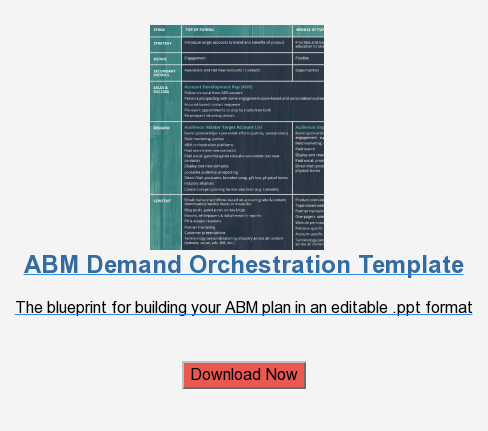Are you sold on the merits of an account-based marketing strategy, but you don’t know how to secure the budget needed to implement a plan? There are several ways to approach the question of budget for a new ABM plan within your marketing organization.
Most companies don’t make a complete switch overnight. Instead, they progressively move small percentages of their marketing initiatives to ABM. While some organizations move faster than others, it’s important to be sensitive to your company’s needs, culture, and ideologies. Turtle or hare? It doesn’t matter, but here are some ways to sell on the budget issue within your organization.
[1] Budget Experiment
One way to advocate for an ABM strategy is to ask for an experimental budget for a limited period of time. Perhaps ask for an experiment category in next year’s marketing budget to use as a 12-month test of ABM. The merits of the program would be reevaluated at the end of the year to see whether account-based marketing is a feasible strategy that yields results for your organization.
This approach does require that marketing leaders have bought into the merits of an account-based marketing strategy. But it can come across as a less risky request — as opposed to asking for an indefinite budget allowance to implement the plan. An experimental approach creates a purposeful timetable for testing.
At the same time, if your organization chooses this model of budget approval, it’s equally critical for your team to have all the tools they need to succeed at their immediate disposal.
Before asking for budget (or as a part of the experimental budget request), a marketing team should have the tools to do each of the following tasks:
- Create a target account list
- Lead-to-account mapping inside the CRM
- Alignment with the sales team around ABM processes
- Multi-touch attribution tracking that organizes touchpoints by account
- Predictive account engagement scoring
The most important technologies necessary to these processes are (a) data enrichment technologies, (b) an advanced attribution solution, and (c) CRM integrations with both of these technologies. As an added bonus, an ABM platform that can be used for outreach personalization is also helpful.
[2] Budget Reallocation
Proposing that a portion of a B2B marketing budget be reallocated to an account-based marketing plan is a viable option. But again, it does require marketing leaders in the organization to have already bought into the ideologies of ABM. Commitment to the cause is an integral component of account-based marketing success because ABM is essentially a backwards approach to traditional inbound marketing.
How do you go about reallocating budget to ABM? One of the best ways is to identify wasted budget spend that isn’t generating leads, opps, or revenue. However, calculating marketing ROI can be a fuzzy task if you’re not equipped with the martech solutions that make accurate calculations possible.
For example, an advanced attribution solution has helped hundreds of companies identify spend that is being wasted on marketing activities, keyword bids, content creation, and more.
These are unnecessary budget siphons that fly under the radar because there isn’t a comprehensive system that could evaluate channel and campaign effectiveness at the touchpoint level. For companies considering adopting an attribution solution, it could be the key to uncovering wasted spend that could be reallocated to other plans, like a new ABM strategy.
[3] Budget Integration
A less disruptive alternative to implementing an ABM strategy is to integrate the budget into other pieces of the marketing budget. For example, if there’s a proposal for a website overhaul, it would be smart to propose that personalization capabilities be integrated into the new design.
Or, if your paid media manager is already spending marketing budget on paid advertising, a B2B marketing team gearing up for ABM can choose to compile a target account list and run a couple ABM campaigns within their demand strategy.
Or, if your organization is already planning budget for a direct mail campaign, propose the creation of a target account list that can be integrated into the program.
These types of initiatives can test certain elements of an ABM strategy without breaking the bank, and if those campaigns yield feasible top-of-funnel results, you now have further reason to advocate for down-funnel engagement nurturing — which would require a more comprehensive ABM strategy.
Also, take advantage of ROI calculators and ABM case studies that can further prove the potential effectiveness of a full-on ABM strategy. Little steps can go a long way.
What’s My First Step?
If these options still seem too far out, your first order of business could be to assemble the martech solutions necessary to build a target account list and eventually run an ABM program. Data enrichment technologies are especially helpful, so if that’s next up on the martech docket for your company, it’s an easy first step.
Secondly, in order to measure the results of any future account-based marketing plan, your organization will need a data measurement tool that can prove ROI. An advanced attribution solution, equipped with a CRM integration and lead-to-account mapping, has applications for both demand strategies and ABM programs.
While these are two small steps you can take, they will eventually lead you closer toward a larger goal of winning account-based marketing budget approval.

